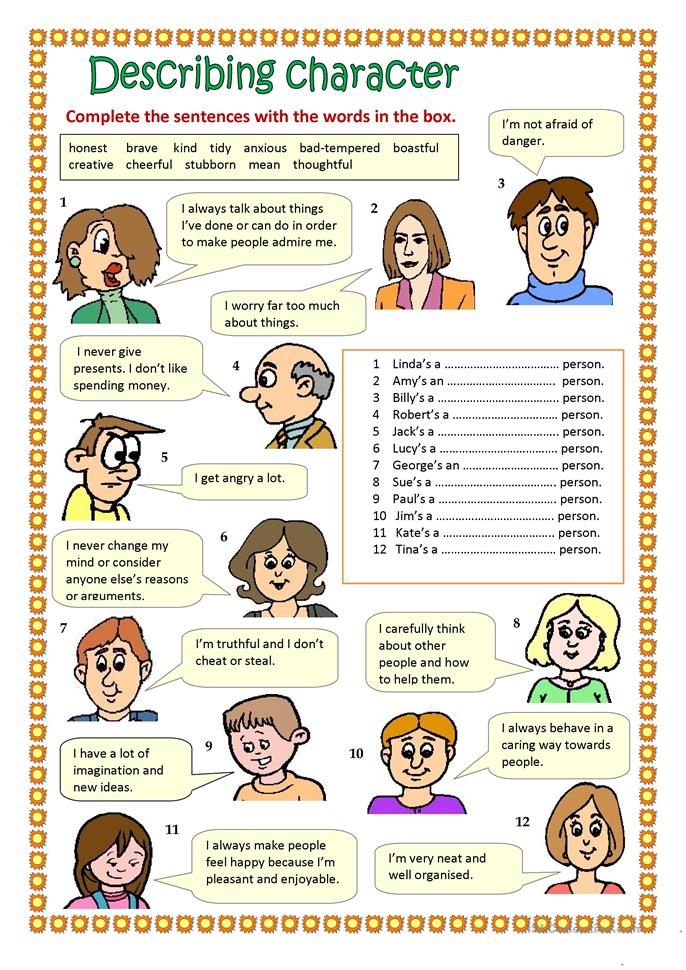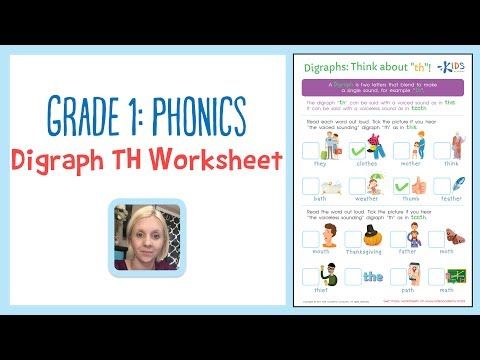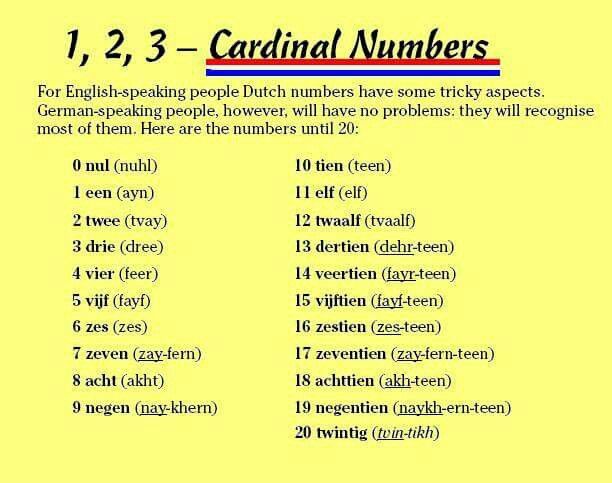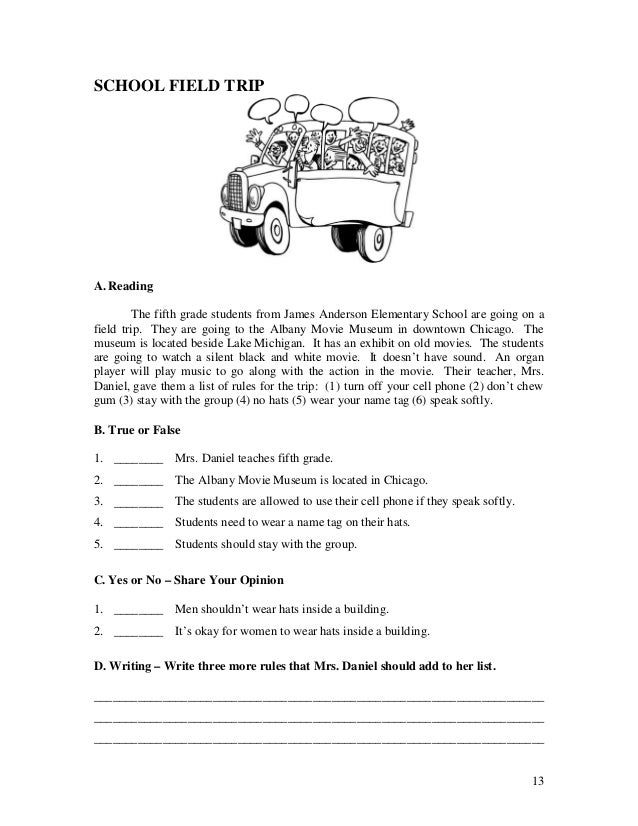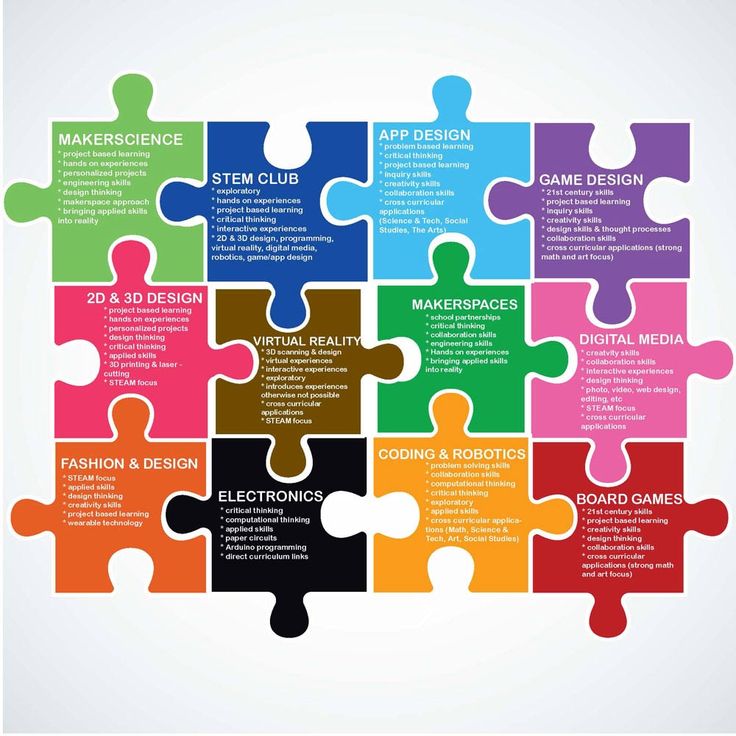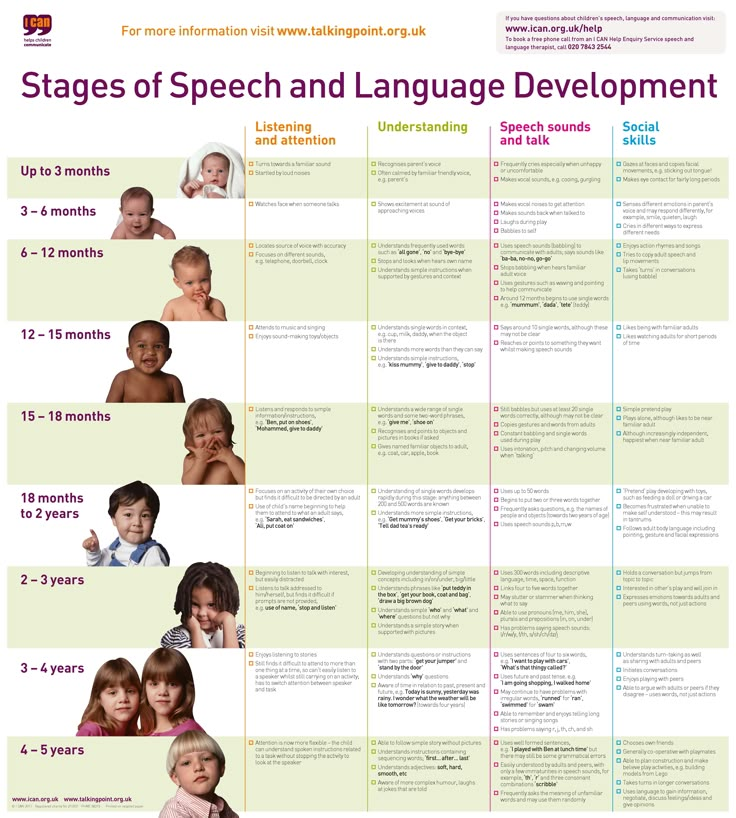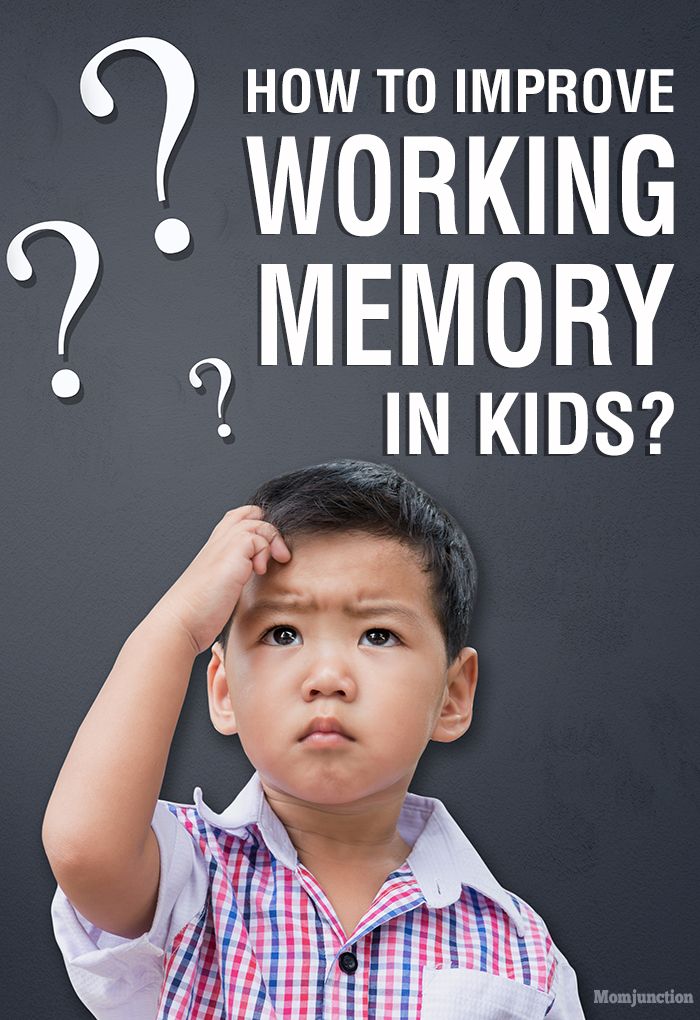Identifying feelings activity
10 Activities for Teaching Young Children About Emotions
Having the vocabulary to talk about emotions is an important part of healthy social-emotional development. In today’s post, we’re sharing a few simple games and activities you can use to teach young children about emotions: how to recognize and name them, how to talk about them, and how to pick up on the feelings of others. Adapted from some new and classic Brookes resources on social-emotional development, these activities are ideal for use in early childhood programs (and parents can easily adapt them for home, too!).
What’s your favorite way to get young children talking about emotions? Add your idea in the comments below!
Feelings ID
This activity is a great starting point for teaching young children about emotions. Here’s what to do:
- Generate a list of feelings. Start with a basic feeling, such as happy or sad, and explain that this is a feeling.
Give a second example, using a more complex feeling such as excited or surprised. Ask students to generate other feelings, add them to the list, and display the list for students on chart paper or with a projector.
- Identify feelings as good or not so good. Go back to the start of your feelings list, and have the students give you a thumbs-up for feelings that make people feel good on the inside and a thumbs-down for feelings that make people feel not so good on the inside.
- Conduct a follow-up discussion. Ask students if they have ever had any feelings where it was hard to decide if the feeling made them feel good or not so good on the inside. Give an example.
Feeling Dice Game
Create “feeling dice” using clear acrylic photo cubes—slide drawings of faces depicting different emotions on each side. (You could also use photos or cutouts from magazines instead of drawings.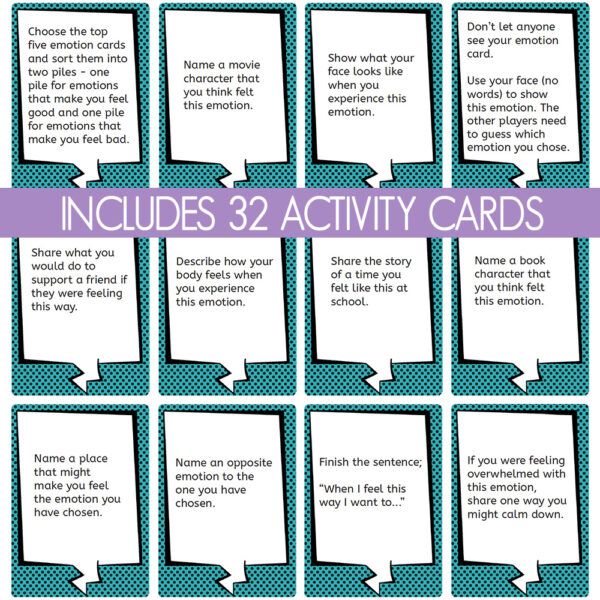 ) In a small group, give each child a chance to roll the dice. When the dice lands, ask the child to identify the feeling and describe a time when they felt that way.
) In a small group, give each child a chance to roll the dice. When the dice lands, ask the child to identify the feeling and describe a time when they felt that way.
How Would You Feel If…
Brainstorm some common scenarios that might elicit different feelings. A few examples:
- “Your grandma picked you up after school and took you get to ice cream.”
- “Your classmate spilled paint on your drawing.”
- “Your mom yelled at you.”
- “Your brother wouldn’t let you have a turn on the swings.”
Put the scenarios in a hat and pass the hat around the circle or small group while you play music. When you stop the music, the child left holding the hat should pick out a scenario (you can help read it for the child if they can’t yet read). Then ask the child to describe how they would feel if the scenario happened to them.
Read & Learn
Choose a book about feelings to share with students, or read a book from the following list of examples: Feelings by Aliki, The Way I Feel
by Janan Cain, Feelings by Joanne Brisson Murphy, The Feelings Book by Todd Parr, and My Many Colored Days by Dr.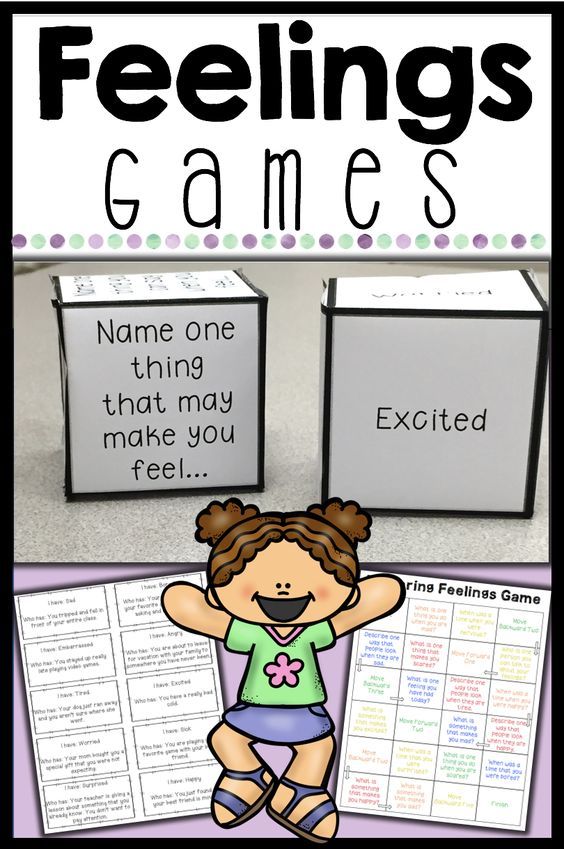 Seuss. Be sure to point out all the actions or ways in which the characters behave when they’re acting on their feelings. Use the following questions to guide your class discussion about emotions:
Seuss. Be sure to point out all the actions or ways in which the characters behave when they’re acting on their feelings. Use the following questions to guide your class discussion about emotions:
- What was one of the feelings the character had?
- Do you think it was a good or not so good feeling?
- What did the character do when he or she was feeling that way?
- Was it an okay or not okay way of showing the feeling?
- Can you think of a time when you felt that way? What kind of face can you make to show that feeling?
Feeling Wheel Game
Create a spinning wheel that features different feeling faces. (Need tips on making one? This blog post shows you how to make spinners
for games using items you probably have easy access to.) Give each child a chance to spin the feeling wheel. When the spinner lands on a feeling face, ask the child to identify the feeling and talk about an incident that made them feel that emotion.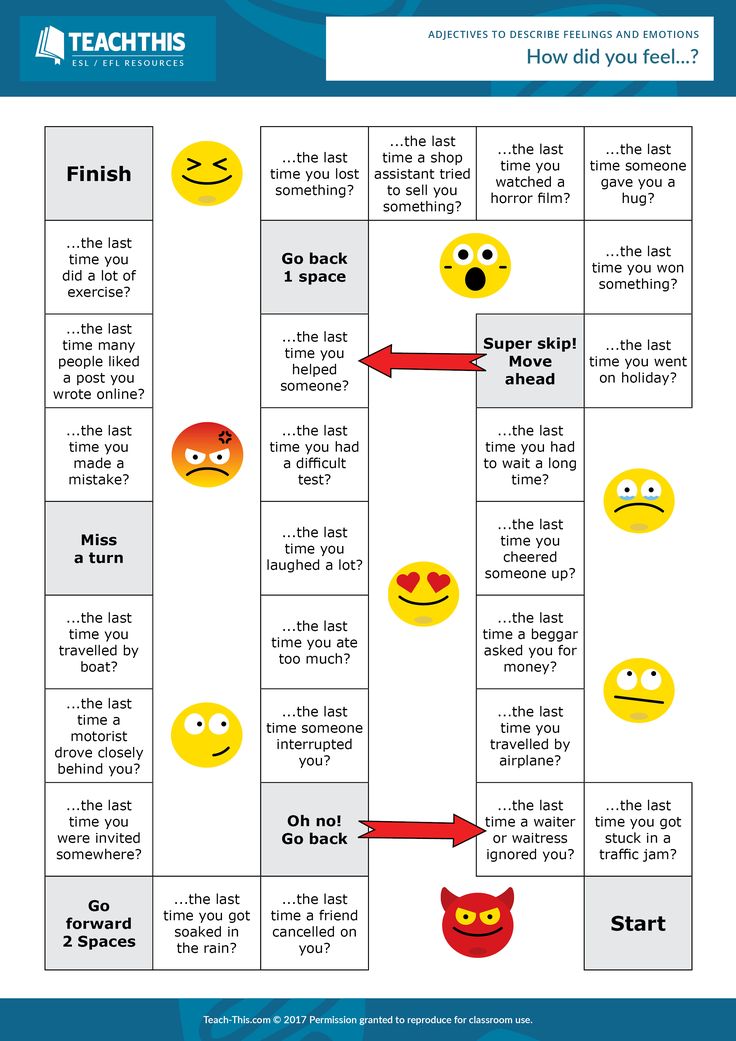
Emotion Charades
Form small groups of students. Using laminated cards with illustrations of feelings on them, a large die, or a beach ball with each stripe of color preassigned to represent a feeling, have students act out the face and body clues that show the feeling they drew or rolled. Ask the other students to take turns guessing which feeling is being acted out.
Feeling Face Bingo
Create feeling face bingo boards for your students, each with 12 squares that feature various feeling faces (you can add more squares for older children). Have children draw a feeling name from a bag and then cover the matching feeling face with the paper that was drawn from the bag. When they cover a face, they can talk about events or memories that made them feel that emotion.
Puppet Play
Puppet play is a good activity to try one-on-one or in small groups to help children explore and express their feelings, ideas, and concerns. Many children find it easier to talk about feelings during puppet play, because it can give them some distance from scary or upsetting issues.
Many children find it easier to talk about feelings during puppet play, because it can give them some distance from scary or upsetting issues.
Encourage children to pick up a puppet and be its voice while you or another child or adult adopts the character of another puppet. You can discuss the children’s feelings indirectly and offer another point of view through your puppet. Reversing the characters so that children play another role can also promote empathy by helping kids experience how others feel.
Feelings Collage
For this activity, you’ll need old magazines and some basic art supplies: posterboard or construction paper, scissors, and glue sticks. Invite your students to cut pictures from the magazines of people expressing any kind of feeling, and instruct them to use these images to build a “feelings collage.” Hand out markers and ask students to label each picture in their collage with a feeling word; then, have them take turns explaining their collages and feeling labels to the group.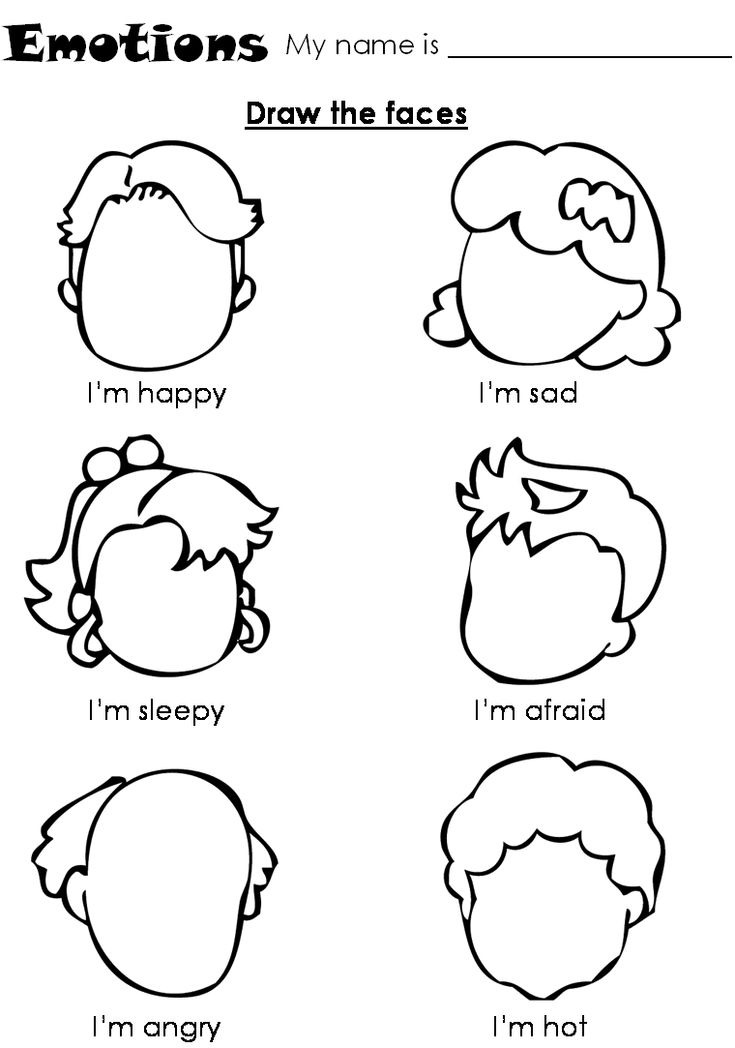 Encourage your students to elaborate on the details of what they noted regarding the person’s facial expression, their body language, or the context of the photo or illustration. When the activity is over, let your students take the collages home and post them in a prominent place so they can practice identifying and labeling their own feelings.
Encourage your students to elaborate on the details of what they noted regarding the person’s facial expression, their body language, or the context of the photo or illustration. When the activity is over, let your students take the collages home and post them in a prominent place so they can practice identifying and labeling their own feelings.
Feeling Face Memory Game
Make 12 pairs of matching feeling faces—you can draw them or find appropriate photos or illustrations to print out. Turn over the face cards and arrange them in a grid. Ask each child to turn two cards over to try to get a match. When they find a match, they can say what the feeling is and describe a time when they felt that way. They set the match aside, and children keep going until all matches are found.
***
Try these games and activities with your students (or at home with your own children), and let us know which ones worked best for you! And for more ways to help promote healthy social-emotional development in young children, check out the books we adapted this week’s post from:
Activity 1: Adapted from Merrell’s Strong Start—Grades K–2, by Sara A.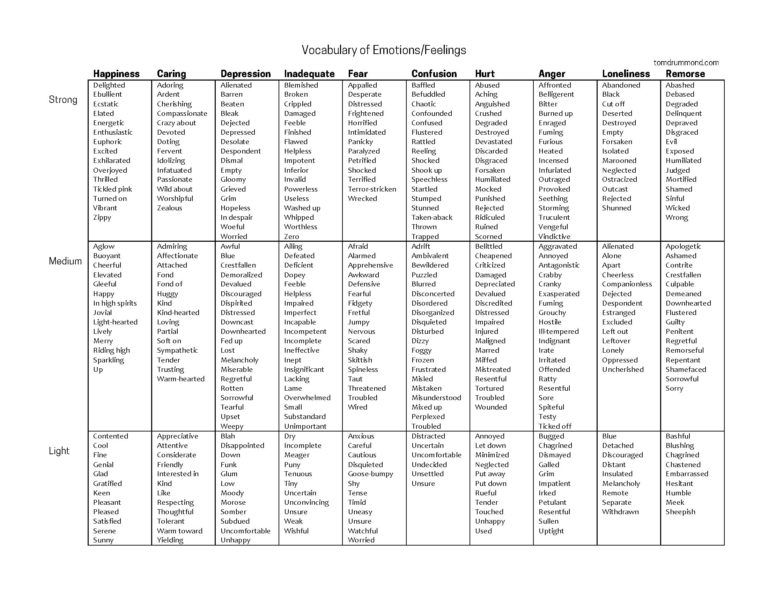 Whitcomb, Ph.D., & Danielle M. Parisi Damico, Ph.D.
Whitcomb, Ph.D., & Danielle M. Parisi Damico, Ph.D.
Activities 2, 3, 5, 7, and 10: Adapted from Unpacking the Pyramid Model, edited by Mary Louise Hemmeter, Ph.D., Michaelene M. Ostrosky, Ph.D., & Lise Fox, Ph.D.
Activity 8: Adapted from Pathways to Competence, Second Edition, by Sarah Landy, Ph.D.
Activities 4, 6, and 9: Adapted from Merrell’s Strong Start—Pre-K, by Sara A. Whitcomb, Ph.D., & Danielle M. Parisi Damico, Ph.D.
Sign up for one of our FREE newsletters
22 Activities to Help Middle Schoolers Express Their Feelings
// by Josilyn Markel
Middle school is a time in life when emotions run wild and free. It's also the perfect age to help students recognize, name, experience, and accept the wide range of emotions that they face each day.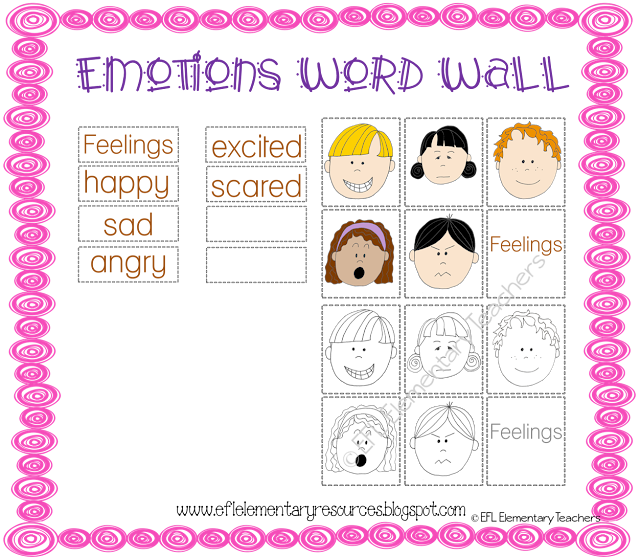
Here are 22 activities that can help your middle school students get in touch with their strong feelings, even without detailed lesson plans. You can work them right into whichever lessons you're already teaching that day!
1. Emotional Vocabulary List
This list goes way beyond the basic vocabulary of "happy" and "sad" to help kids give more precise and reasoned explanations of their feelings. By introducing this emotional vocabulary early on in the school year, you can prepare your middle schoolers to talk about their feelings in everyday situations.
Learn more: Tom Drummond
2. Interactive Online Emotion Cards
This online activity helps kids identify facial expressions and descriptions of emotions. It is interactive, and it's a great starting point to get students talking about everything from fun times to difficult feelings.
Learn more: Therapist Aid
3. Classroom Yoga
When things get emotional or stressful in the classroom, classroom yoga is a great way to help your students come back to their centers. Try out these simple poses and breathing exercises; some of them can even be done while the students stay at their desks!
Learn more: Class Yoga Kids
4. Mindfulness Calendar
This resource focuses on daily doses of mindfulness to help kids practice emotional control for at least 5 minutes every day. It includes a variety of quick activities that you can use at the beginning, middle, or end of class to bring students back to the center.
Learn more: Mentally Healthy Schools
5. Emotional ABCs Curriculum
This curriculum is research-based and designed to help students name and face their challenging emotions.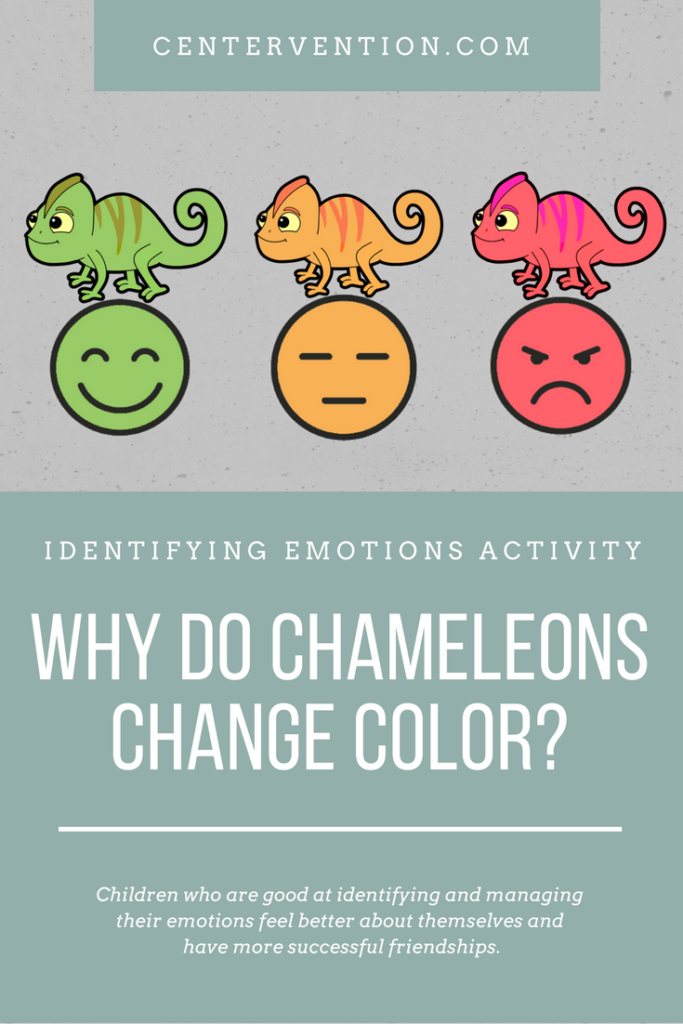 Each color monster guides the middle schoolers through different kinds of emotions. Each lesson about emotions also features assessment tools and practice.
Each color monster guides the middle schoolers through different kinds of emotions. Each lesson about emotions also features assessment tools and practice.
Learn more: Emotional ABCs
6. Focus on Perspective
Whenever you're reading a book, watching a movie, or exploring different character education activities, use it as a chance to practice perspective taking. This means that you should encourage students to think about life from the perspective of the characters in the book or movie. Have them use their emotional vocabulary to try to identify and explain the feelings of any character.
Learn more: Book Units Teacher
7. The Emotion Wheel
This tool is helpful in identifying and explaining everything from normal to extreme emotions.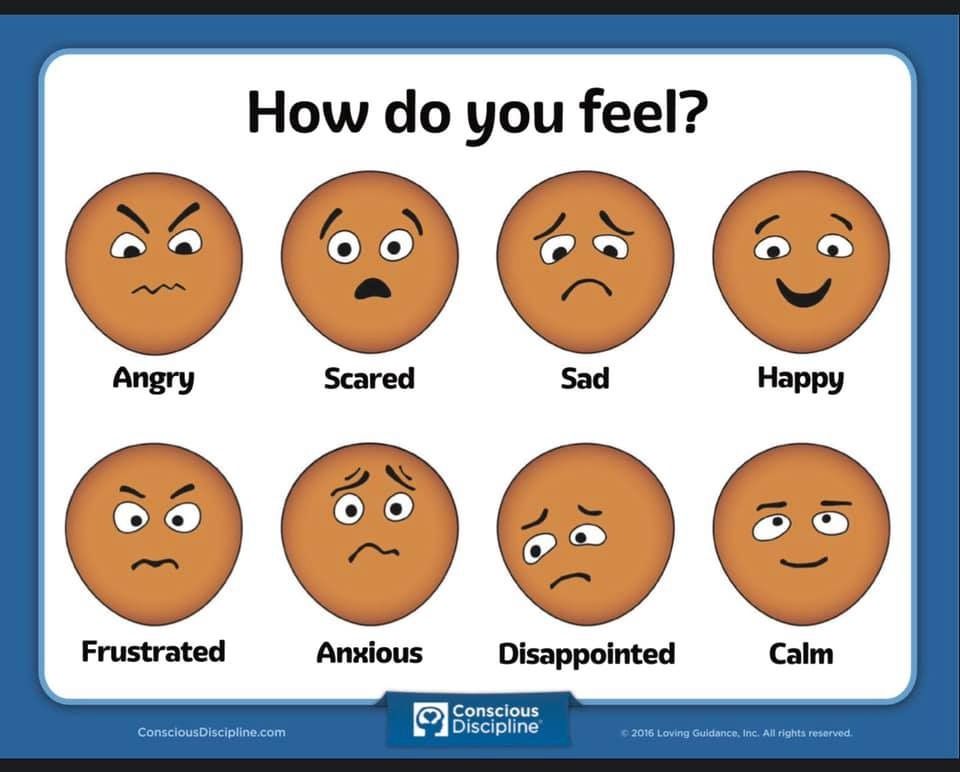 It's a tool that is used by psychologists, and simplified versions are a great way to help middle school students start talking about their feelings and naming the correct emotion that they're feeling.
It's a tool that is used by psychologists, and simplified versions are a great way to help middle school students start talking about their feelings and naming the correct emotion that they're feeling.
Learn more: Practical Psychology
8. Anxiety Thermometer
This printable emotion anxiety worksheet enables students to identify and explain the level of anxiety they feel in certain situations. This can be helpful in times when students are presenting extreme emotions or inappropriate behavior; it can also take you to the root cause of these issues.
Learn more: Mentally Healthy Schools
9. Identifying and Labeling Emotions
This handy list of discussion starters and activities can be easily worked into any lesson plan. They're also great to have in mind in the case of emotional outbreaks or inappropriate behavior in the classroom since they're geared towards regulating students' emotions in real-time.
Learn more: Susan Fitzell
10. Understanding Anxiety
This video is a great way to introduce the topic of anxiety and to de-stigmatize some of its causes and symptoms. It dives into the fight or flight behaviors, and it gives a clear and level-appropriate description of what anxiety is and how to react to it.
Learn more: Anxiety Canada
11. Healthy vs. Unhealthy Coping Strategies
This tool enables classroom guidance lessons that target the different ways that students can cope with stress or negative emotions. It does a great job identifying unhealthy coping mechanisms while training and promoting healthy ones.
Learn more: Mentally Healthy Schools
12. Setting SMART Goals
The affective element of education has been shown to be linked to goal-setting and attainment. So, an important step in emotional regulation in an academic setting is having good goals. This video explains how middle school students can set and achieve SMART goals.
So, an important step in emotional regulation in an academic setting is having good goals. This video explains how middle school students can set and achieve SMART goals.
Learn more: 2 Minute Classroom
13. Resilience Board Game
This board game has students using game cards to talk about their feelings in everyday and difficult situations. It's also a great tool for promoting empathy through group work and interactive games in the classroom.
Learn more: Mentally Healthy Schools
15. Deep Breathing Exercises
This video is a quick introduction to an easy breathing exercise that your students can utilize in any situation, including in the middle of class! It goes through the key steps for getting a good deep breath, including the inhale breath and exhale breath patterns for maximizing control and focus.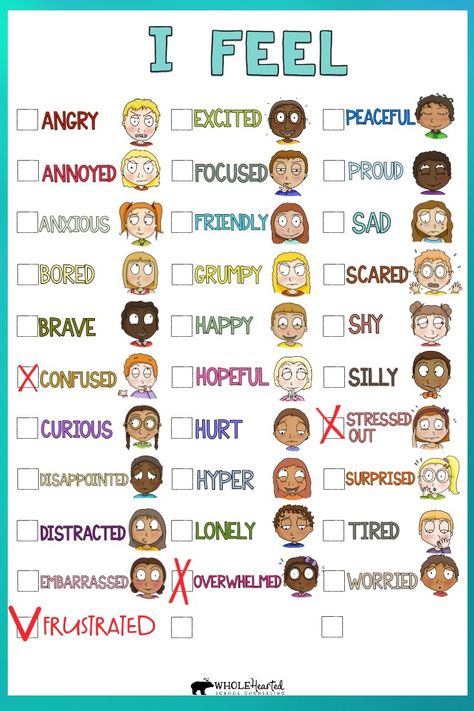
Learn more: Children's Healthcare of Atlanta Strong4Life
16. Empirical Underpinnings
This article and interview help teachers understand the role and importance of emotional resilience in middle school students. It's so much more than just classroom management: students' emotional intelligence also has a huge impact on their learning and achievement!
Learn more: Resilient Educator
17. The RULER Approach
This curriculum is designed to help students identify and regulate their big and small feelings alike. It's based on strong research and years of planning, with input from some of the top experts in the field.
Learn more: Westport PS
18. Kindness Bingo
This game is a great way to inspire simple acts of kindness and empathy from your middle school students. It also gives practical and actionable examples of ways that students can apply their emotional intelligence.
Learn more: Pinterest
19. Integrating Social-Emotional Learning
These tools will help you guide students through social settings where they will participate in the social regulation of their emotions. This means that they will become aware of the ways that their actions and reactions impact the social-emotional space that they share in the classroom.
Learn more: The Pathway 2 Success
20. Games for Emotional Regulation
This video details five great games to help your middle school students master emotional regulation. It is also a great way to promote open and honest communication about your students' emotions.
Learn more: Kreative Leadership
21.
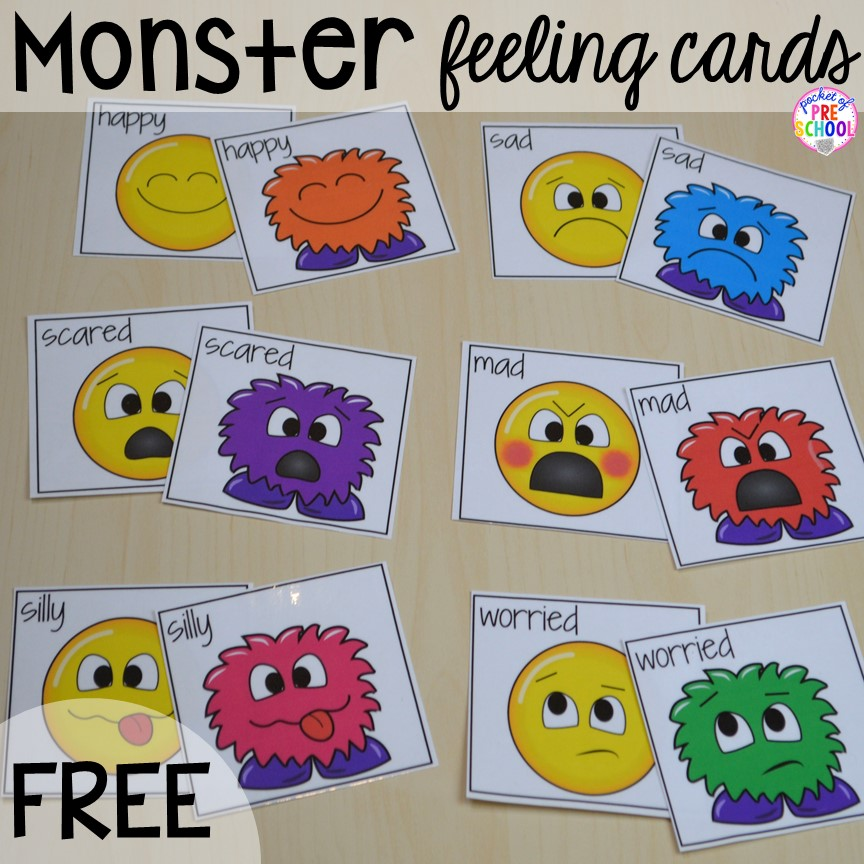 What's Under the Anger?
What's Under the Anger? This handy chart gives a lot of different reasons that a student might feel angry, and it's a great jumping-off point for helping middle schoolers identify the source of their anger in a given situation.
Learn more: Pinterest
22. Coping Strategies Wheel
This hands-on craft results in a tool that gives students lots of healthy coping tools. The wheel features different ways that students can cope with negative emotions or stress, and it's a great reminder of these skills throughout the school year.
Learn more: The Pathway 2 Success
Related posts:
Category: Classroom Ideas
0003 At the heart of many pathological and prepathological conditions of the body are violations of the functioning of enzyme systems.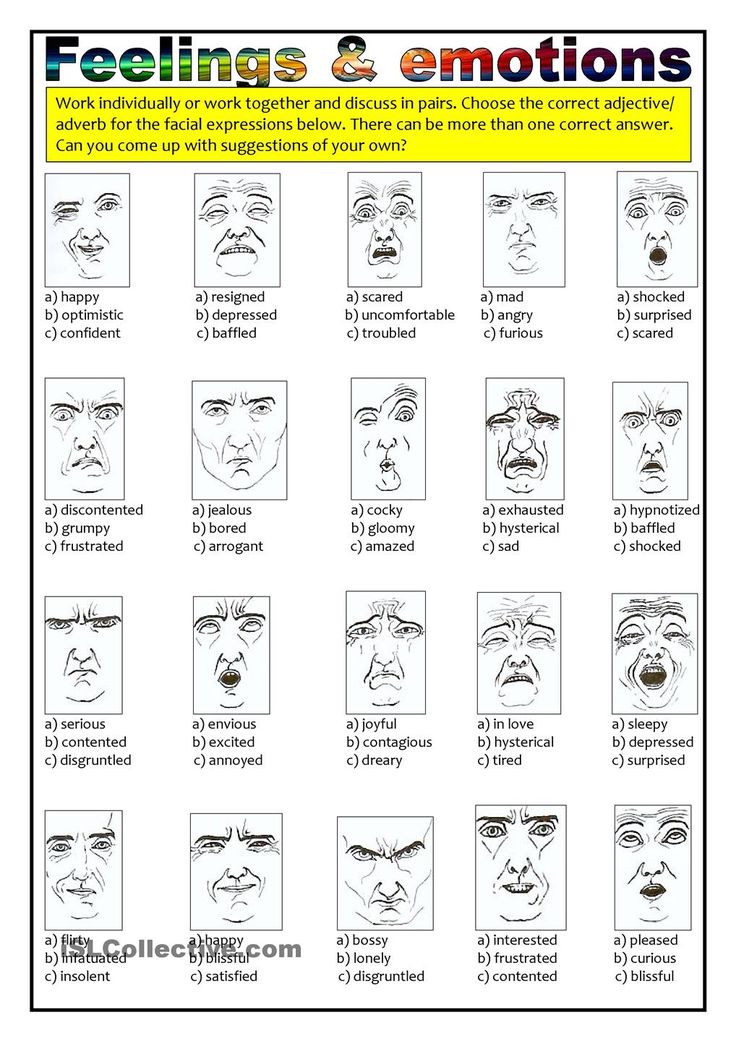 Many enzymes are localized inside cells, and therefore their activity in the blood serum (plasma) is low or absent altogether. That is why, by analyzing extracellular fluids (blood), the activity of certain enzymes can reveal changes occurring inside the cells of various organs and tissues of the body. other enzymes are constantly present in the blood, in known quantities and have a specific function (for example, enzymes of the blood coagulation system).
Many enzymes are localized inside cells, and therefore their activity in the blood serum (plasma) is low or absent altogether. That is why, by analyzing extracellular fluids (blood), the activity of certain enzymes can reveal changes occurring inside the cells of various organs and tissues of the body. other enzymes are constantly present in the blood, in known quantities and have a specific function (for example, enzymes of the blood coagulation system).
The activity of enzymes in the blood serum reflects the balance of the rate of enzyme synthesis inside the cells and their release from the cells. An increase in the activity of blood enzymes can be the result of an acceleration of synthesis processes, a decrease in the rate of excretion, an increase in the permeability of cell membranes, the action of activators, and cell necrosis. A decrease in enzyme activity is caused by an increase in the rate of enzyme excretion, the action of inhibitors, and inhibition of synthesis.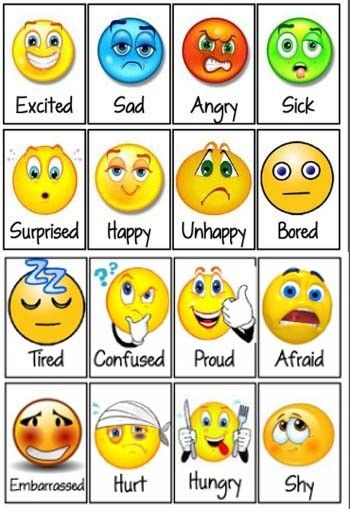
An increase in the activity in the blood of one or another enzyme is a very early diagnostic test. An additional definition of the isoenzyme spectrum allows you to clarify the localization of the pathological process, since each organ has its own specific isoenzyme spectrum.
In clinical biochemistry, the indicator of activity of aspartate aminotraisferase and alanine aminotransferase is of great importance. These transaminases are found in mitochondria and in the soluble fraction of the cytoplasm of cells. The role of transaminases is reduced to the transfer of amino groups of amino acids to keto acid. The coenzyme of transaminases is pyridoxal phosphate, a derivative of vitamin B6. In the blood of animals, the activity of both enzymes is very low compared to their activity in other tissues. However, in pathologies accompanied by cell destruction, transaminases exit through cell membranes into the blood, where their activity is significantly increased compared to the norm.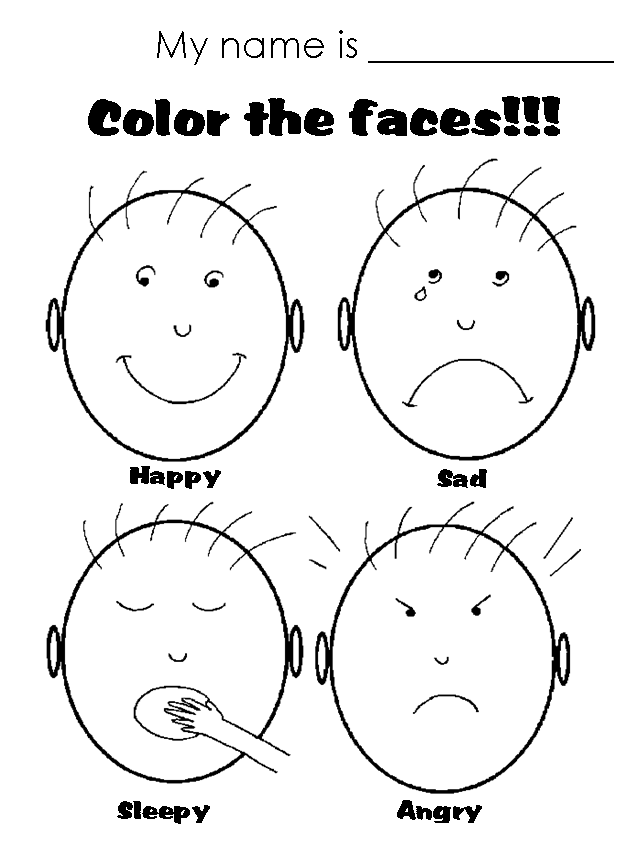 Despite the lack of strict organ specificity of these enzymes, an increase in their activity is observed in hepatitis, muscular dystrophy, trauma, and excessive physical exertion on the body, in particular, in sports horses.
Despite the lack of strict organ specificity of these enzymes, an increase in their activity is observed in hepatitis, muscular dystrophy, trauma, and excessive physical exertion on the body, in particular, in sports horses.
Lactate dehydrogenase (LDH), a glycolytic enzyme that catalyzes the reversible reduction of pyruvic acid to lactic acid. LdG consists of four subunits and includes five isoenzymes. Moreover, the LdG5 isoenzyme predominates in muscle tissue, LdG1 and LdG2 in the heart muscle. In acute myocardial infarction in patients in the blood serum, the activity of LDH1 and LDH2 isoenzymes increases. In parenchymal hepatitis, the activity of the LdG4 and LdG5 isoenzymes significantly increases in the blood serum, while the activity of LdG1 and LdG2 decreases. The activity of LdG in whole blood is significantly higher than the activity of the enzyme in blood plasma. Therefore, even minimal blood hemolysis significantly changes the activity of the enzyme in plasma, which should be taken into account in laboratory work.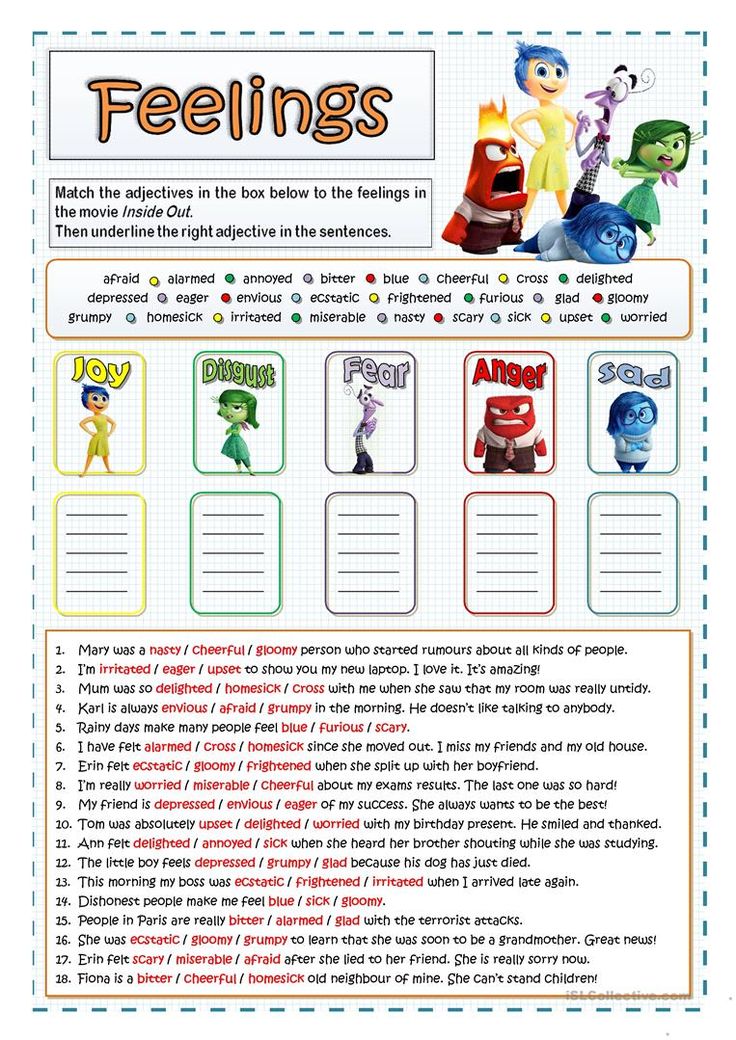
Creatine phosphokinase (CPK) plays an important role in energy metabolism. Creatine phosphokinase is required for ATP resynthesis by transphosphorylation of AdP with creatine phosphate. Creatine phosphate refers to energy-rich phosphate compounds that provide muscle fiber contraction, relaxation, and transport of metabolites into muscle tissue.
Creatine-P + AdP CPK > Creatine + ATP.
Creatine phosphokinase consists of two subunits - M and B, forming three isoenzymes: MM (muscle type), MB (heart type), BB (brain type).
Tissue analysis indicates that significant CPK activity occurs in the skeletal muscle, myocardium, and brain. The heart muscle contains mainly the MM and MB isoenzymes. An increase in the activity of the MB isoenzyme in the patient's blood serum indicates damage to the heart muscle. Determination of CPK isoenzymes is the best diagnostic method for hereditary muscular dystrophy in chickens, with a lack of selenium in cattle, and with paralytic myoglobinuria in horses.
Alkaline phosphatase (AP) is a hydrolytic enzyme synthesized mainly in the liver and excreted from the body in the bile. Its activity optimum is found at pH = 8–9. It is a non-specific enzyme that catalyzes the hydrolysis of many phosphate esters and is present in plasma in the form of isoenzymes. The main source of alkaline phosphatase in young growing animals is bone tissue. The activity of alkaline phosphatase is significantly increased in diseases of the liver and bones, in particular, in osteomalacia. The main role of alkaline phosphatase is probably associated with the deposition of calcium phosphates in bone tissue. An increase in the activity of alkaline phosphatase in the blood serum in bone neoplasms was established.
Cholinesterase is an enzyme involved in the process of nerve impulse transmission, the hydrolysis of acetylcholine into acetate and choline. Serum cholinesterase includes two types of body cholinesterases, the main substrate of which is acetylcholine.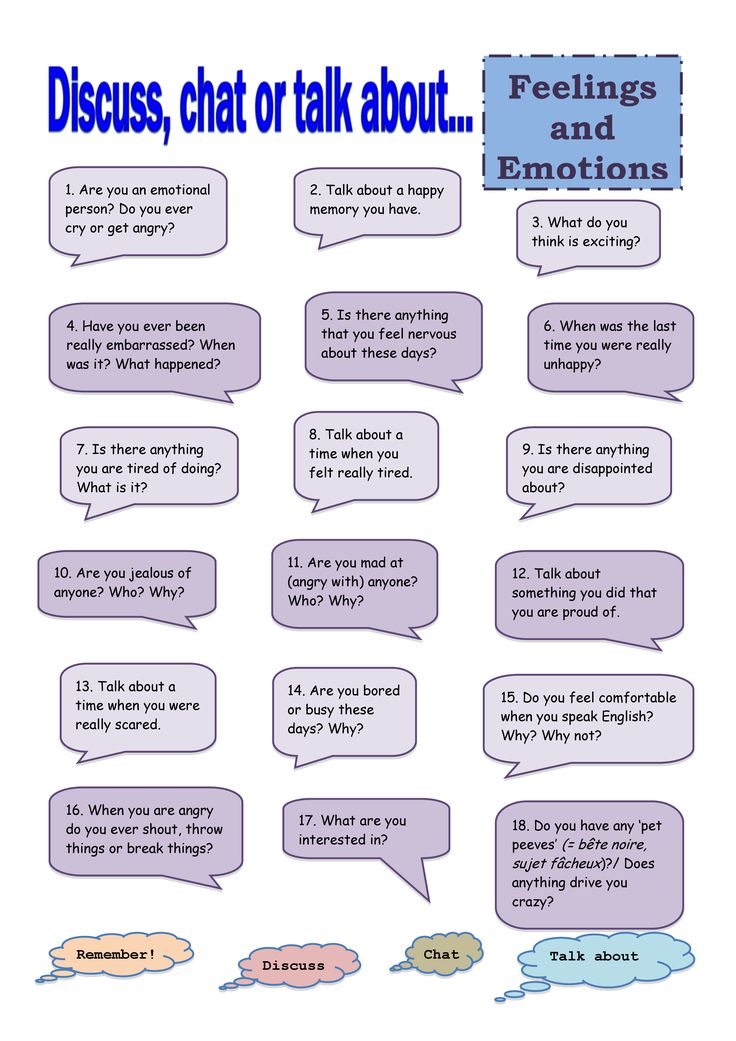 Acetylcholinesterase (AChE), which hydrolyzes acetylcholine in synapses, is called true acetylcholinesterase. It is present in the liver, erythrocytes, and only a small amount is localized in the plasma. Plasma cholinesterase is a pseudocholinesterase, it hydrolyzes butyrylcholine 4 times faster than acetylcholine. This enzyme is also found in the liver, pancreas, and intestinal mucosa. The synthesis of AChE in blood serum occurs in the liver, and therefore, in the pathology of this organ, a decrease in the activity of the enzyme is observed.
Acetylcholinesterase (AChE), which hydrolyzes acetylcholine in synapses, is called true acetylcholinesterase. It is present in the liver, erythrocytes, and only a small amount is localized in the plasma. Plasma cholinesterase is a pseudocholinesterase, it hydrolyzes butyrylcholine 4 times faster than acetylcholine. This enzyme is also found in the liver, pancreas, and intestinal mucosa. The synthesis of AChE in blood serum occurs in the liver, and therefore, in the pathology of this organ, a decrease in the activity of the enzyme is observed.
Irreversible inhibitors of AChE are toxic organophosphorus compounds (OPs). Thus, FOS insecticides (chlorophos, phosphamide, karbofos, octamethyl) selectively bind the active centers of the AChE molecule and thereby block its activity. Due to the high lipotropy of FOS, they are able to penetrate into the body of an animal through intact skin and mucous membranes. In case of FOS poisoning, the animal's anxiety, a feeling of fear, agitation, convulsions, which develop against the background of asthma attacks and coughing due to bronchospasm, are noted.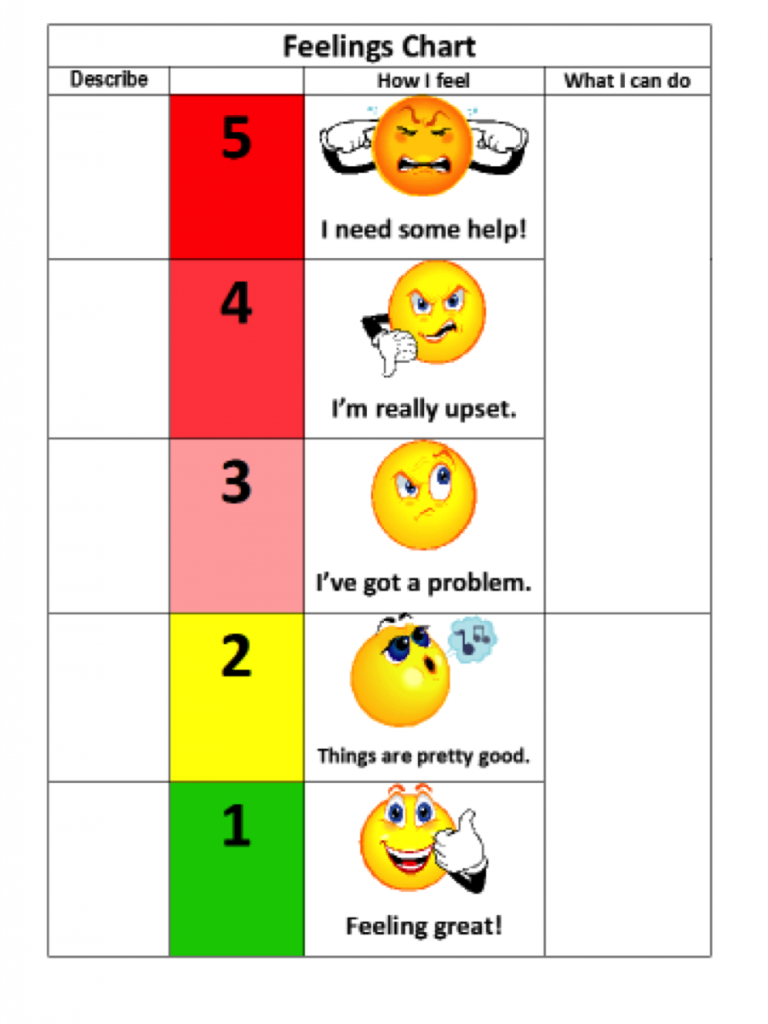 In this case, changes in the eyes are characteristic: the pupil narrows sharply, lacrimation begins, and accommodation is disturbed. Most often, the direct cause of the death of an animal poisoned with FOS is paralysis of the respiratory center.
In this case, changes in the eyes are characteristic: the pupil narrows sharply, lacrimation begins, and accommodation is disturbed. Most often, the direct cause of the death of an animal poisoned with FOS is paralysis of the respiratory center.
Amylase is produced by the salivary glands and in large quantities by the pancreas. Amylase has a specific effect on the c-1,4-glucosidic bonds of polysaccharides. An increase in serum amylase activity indicates the development of acute pancreatitis. A moderate increase in enzyme activity is noted with inflammation of the salivary glands.
By using the site gemohelp.ru, you agree to the use of cookies
I confirm
Read more
Number sense. Comments of researchers from the National Research University "BelSU"
When we pick up several objects, we automatically have a definition in our head, how many objects we picked up and how many we can carry away? How exactly does it work? This is where your sense of number, more precisely, “non-symbolic sense of number,” will come to the rescue.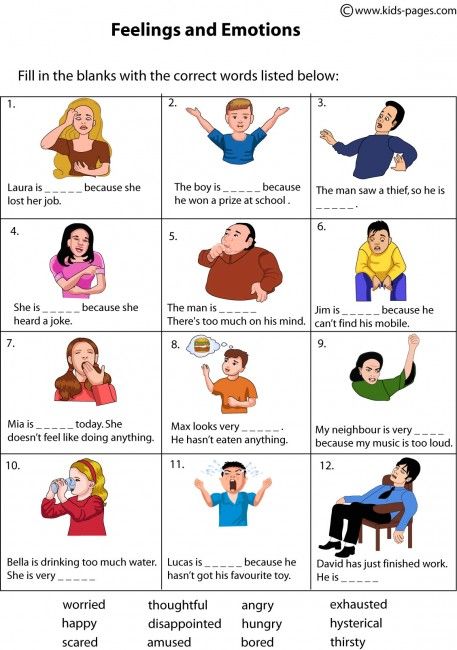 This is the ability to roughly estimate the number of objects without first counting. This ability is inherent in us from birth, and is not only in humans, but also in animals. In addition, a person has a symbolic sense of number associated with the use of mathematical symbols, for example, numbers (actively develops in children with the beginning of mathematics at school). With age, in educational and professional activities, we increasingly use the symbolic assessment of quantity. However, the non-symbolic sense of number does not die out with age.
This is the ability to roughly estimate the number of objects without first counting. This ability is inherent in us from birth, and is not only in humans, but also in animals. In addition, a person has a symbolic sense of number associated with the use of mathematical symbols, for example, numbers (actively develops in children with the beginning of mathematics at school). With age, in educational and professional activities, we increasingly use the symbolic assessment of quantity. However, the non-symbolic sense of number does not die out with age.
Throughout the whole time, it is precisely this that makes life easier for us in everyday situations: choose a shorter queue at the store, a handful of sweets more - so to speak, "by eye", and much more.
In recent years, there has been a significant interest of researchers in this topic. Scientists are trying to answer the question of whether a non-symbolic number sense predicts academic success in mathematics. There is no single answer to this question yet.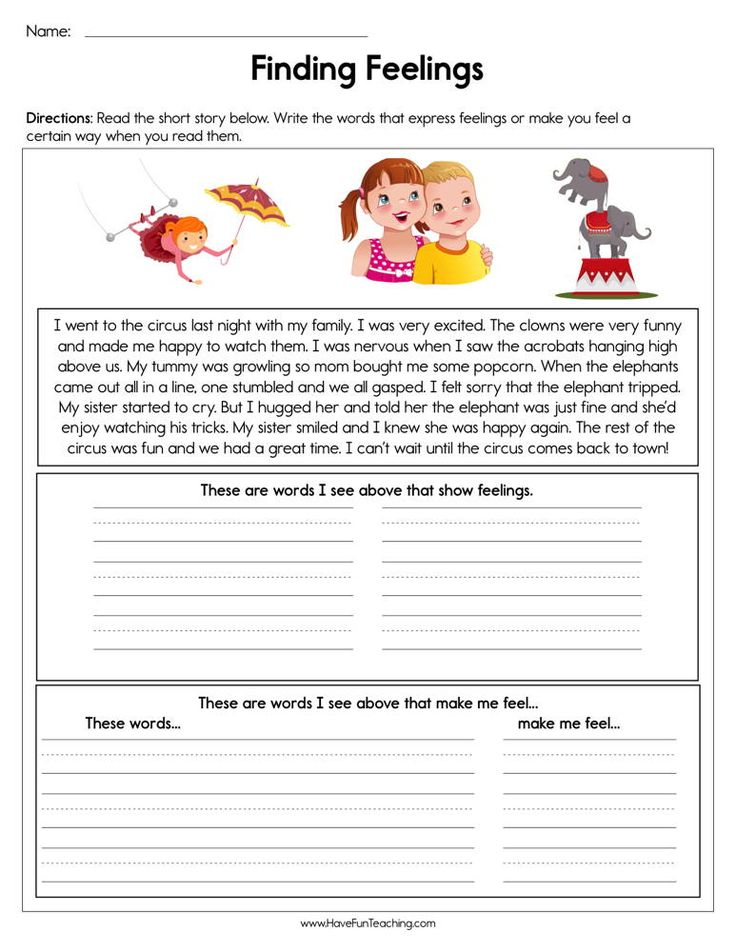 As well as understanding how the non-symbolic sense of number “works” and through what mechanisms. These issues are dealt with by the scientific team of the laboratory of age-related psychogenetics of the Psychological Institute of the Russian Academy of Education and the Research and Design Center for Cognitive Neurosciences and Neurotechnologies of the National Research University “BelSU”.
As well as understanding how the non-symbolic sense of number “works” and through what mechanisms. These issues are dealt with by the scientific team of the laboratory of age-related psychogenetics of the Psychological Institute of the Russian Academy of Education and the Research and Design Center for Cognitive Neurosciences and Neurotechnologies of the National Research University “BelSU”.
“Our task is to identify the psychophysiological mechanisms of the non-symbolic sense of number, those regions of the brain that are associated with systems of approximate estimation of quantity, and to evaluate the participation of each of them in the realization of this ability in humans, depending on the conditions for estimating the quantity,” says Marina Mikhailovna Lobaskova, PhD in Psychology, Senior Researcher at the Laboratory of Developmental Psychogenetics of the Psychological Institute of the Russian Academy of Education, head of the Russian Foundation for Basic Research grant on the topic “Cognitive and psychophysiological mechanisms of number sense”.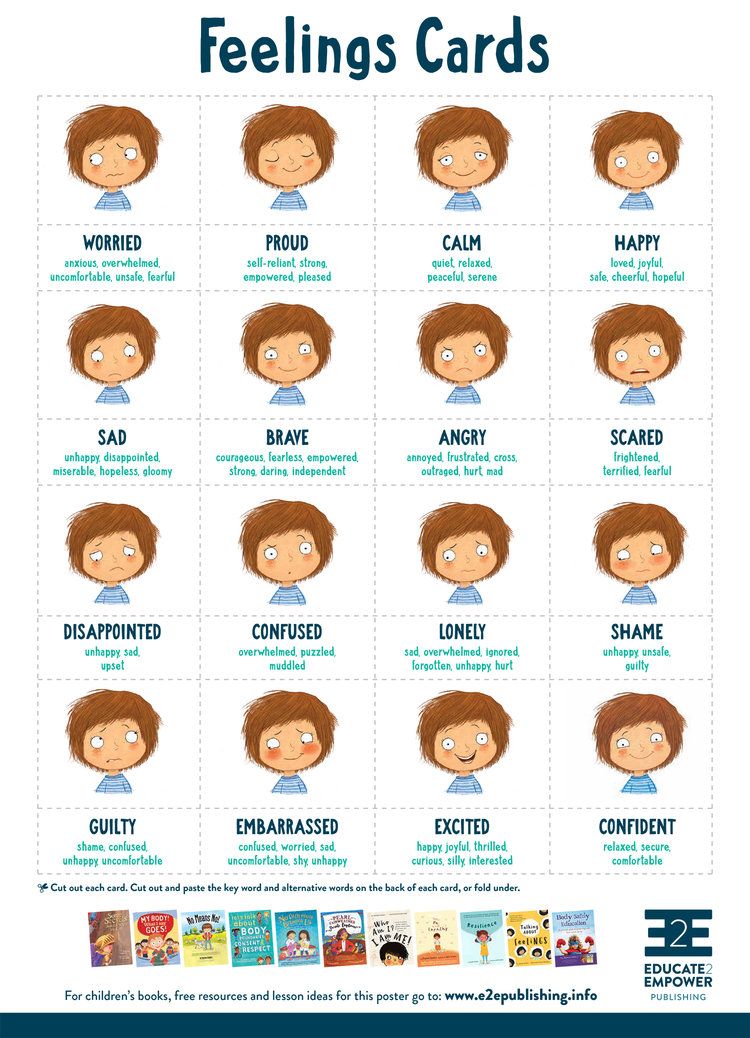 To discover these mechanisms, scientists use brain recording techniques to help capture these temporal and spatial differences. Only such a combination will make it possible to evaluate directly the psychophysiological mechanisms of non-symbolic evaluation of quantity.
To discover these mechanisms, scientists use brain recording techniques to help capture these temporal and spatial differences. Only such a combination will make it possible to evaluate directly the psychophysiological mechanisms of non-symbolic evaluation of quantity.
“For the first time in world practice, we have developed an experimental paradigm for assessing the temporal and spatial characteristics of brain activity in the process of assessing the quantity,” adds Yulia Aleksandrovna Marakshina, Candidate of Psychological Sciences, Senior Researcher at the Laboratory of Age-Related Psychogenetics of the Psychological Institute of the Russian Academy of Education, a member of the scientific team. - For this, we use modern methods of recording brain activity - electroencephalography (EEG) and fNIRS (near infrared spectroscopy). Identification of the relationship of neurocognitive mechanisms of number sense with working memory, cognitive control and mathematical achievements of adolescents contributes to the development of interdisciplinary areas in cognitive psychophysiology and developmental psychology.
Now scientists are at the stage of collecting neurophysiological data using a 64-channel EEG system with active gel electrodes (Brain Products, Germany) and a mobile fNIRS system (NIRx, Germany) based on the Research and Design Center for Cognitive Neurosciences and Neurotechnologies of the National Research University "BelSU" in cooperation with the Open Engineering School of the National Research University "BelSU". The study participants were adolescents aged 11-16 years. The analysis of the obtained data is already being carried out, which will make it possible to compare the brain activation of adolescents in the process of performing special tasks.
“While the EEG method has been known for a long time and is widely used in scientific research, the fNIRS method is relatively new in this area,” explains Maria Aleksandrovna Sitnikova, Director of the Research and Project Center for Cognitive Neurosciences and Neurotechnologies of the National Research University “BelSU”.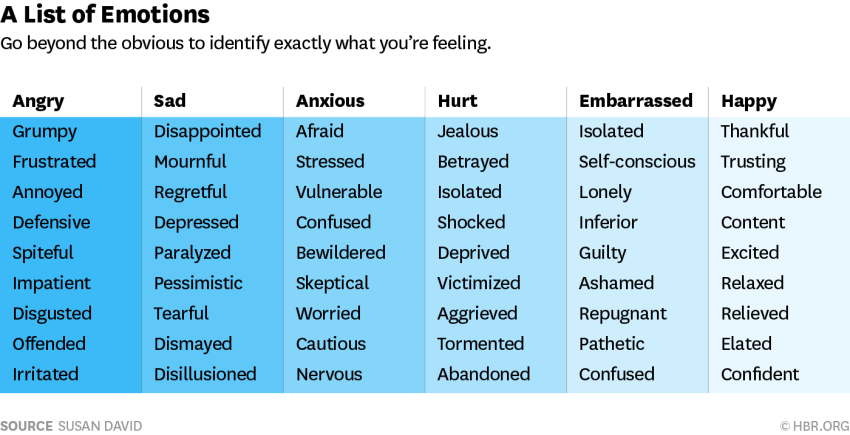 – Near infrared spectroscopy (fNIRS) is a new method of functional neuroimaging. The technique is similar to functional MRI, however, using fNIRS it is possible to assess brain activation in real, not just laboratory conditions. Even outdoors during physical activity or daily activities. The fNIRS system produces light in the near infrared range in the form of two waves of different wavelengths, thanks to which it is possible to recognize two states of oxygenation (oxygenation) of hemoglobin, which allows you to evaluate the activity of all areas of the cerebral cortex in real time. This method will help us identify the areas of the brain involved in the implementation of the sense of number.
– Near infrared spectroscopy (fNIRS) is a new method of functional neuroimaging. The technique is similar to functional MRI, however, using fNIRS it is possible to assess brain activation in real, not just laboratory conditions. Even outdoors during physical activity or daily activities. The fNIRS system produces light in the near infrared range in the form of two waves of different wavelengths, thanks to which it is possible to recognize two states of oxygenation (oxygenation) of hemoglobin, which allows you to evaluate the activity of all areas of the cerebral cortex in real time. This method will help us identify the areas of the brain involved in the implementation of the sense of number.
Researchers hope that the study of the sense of number with the help of modern psychophysiological methods will help to clarify the issue of its mechanisms, and later on the role of the sense of number in the development of mathematics. The knowledge gained can be used in organizing the successful mastering of mathematical knowledge in school lessons, when working with difficulties that arise along the way (for example, dyscalculia - a violation of the development of arithmetic).